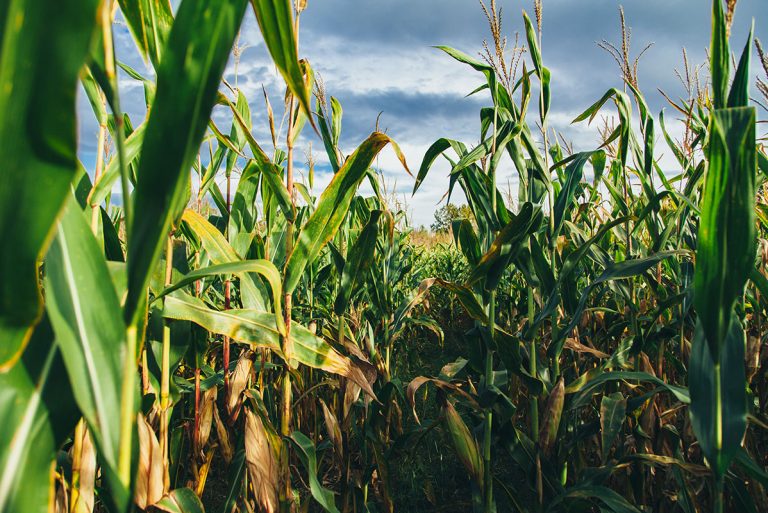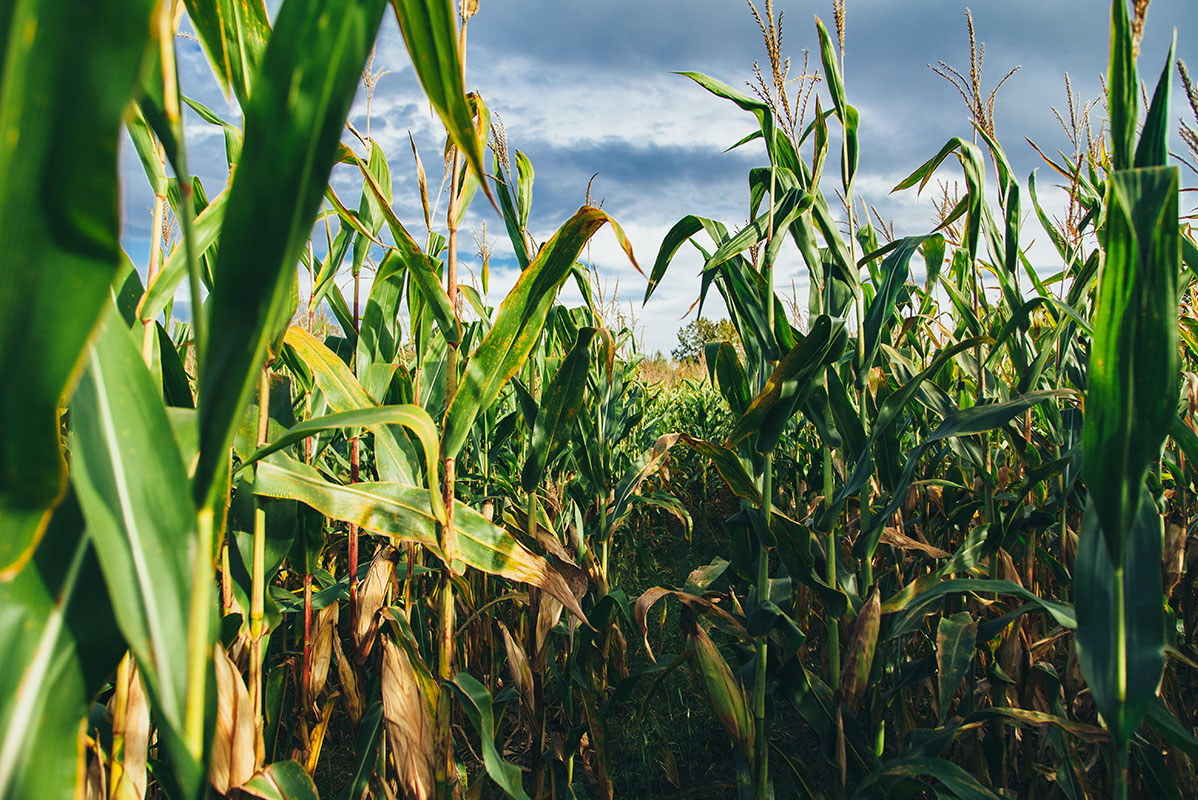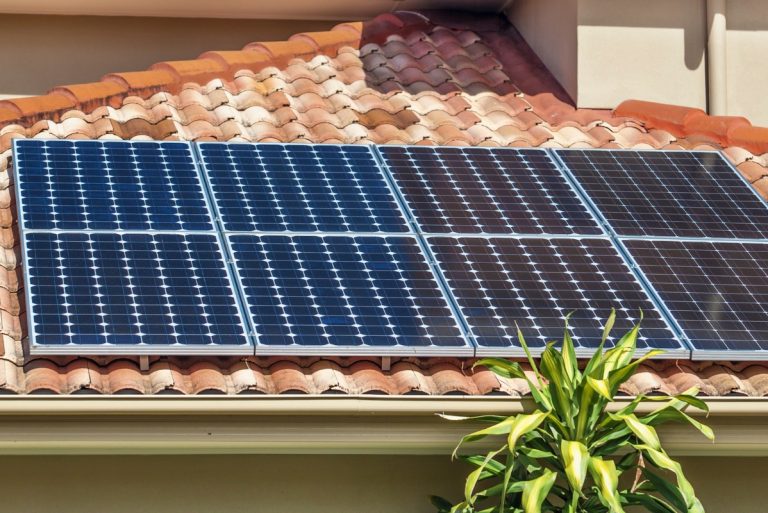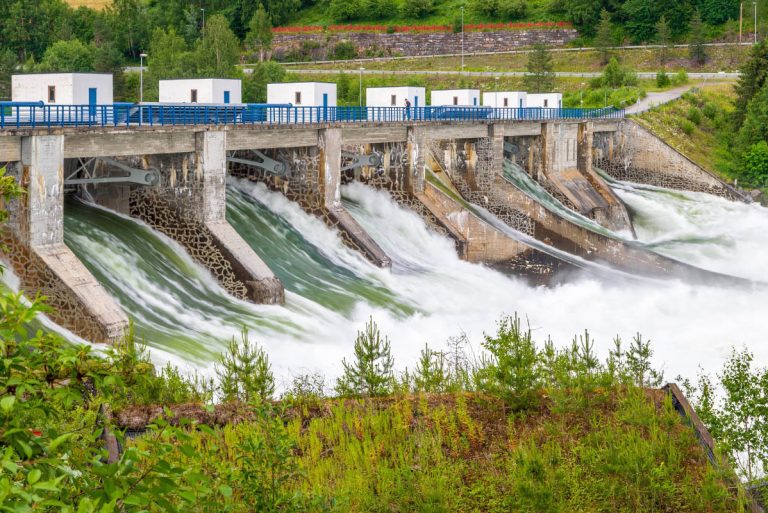As we rapidly run out of fossil fuels, people are looking for renewable sources of energy, with some arguing that biomass is the solution. Before taking a closer look at the advantages and disadvantages of biomass, let’s start by discussing this type of material and how it can be used for fuel.
What is biomass?
Biomass is any kind of organic plant or animal matter. Indirectly, it’s a way of harnessing the sun’s energy – plants convert solar energy into organic material through photosynthesis, which we can then use as fuel.
Humans have used biomass as a form of energy since the earliest days of our evolution, when we started to burn wood for warmth and cooking purposes. Wood remains one of the most common types of biomass used to generate electricity today.
Types of biomass include:
- Wood
- Wood products, including black liquor from paper manufacture
- Crops such as corn, sugar beet, and sugarcane, crop residues, and food processing waste
- Manure and human sewage
- Algae
- Solid waste from landfill, such as paper, wool, cotton, and food waste
Biomass can be transformed into liquid, solid, or gaseous fuels, collectively called bioenergy, through a range of chemical or biological conversions. The biomass itself can also be converted into energy, such as through combustion, or by producing steam that is used to generate electricity.
Although there are some advantages of biomass, and it is a renewable source of energy, there are also a range of concerns associated with biofuels, from deforestation and habitat destruction caused through raw material production to the carbon and pollutants produced by converting and using the fuels. We’ll go over these concerns in more detail later.
How to convert biomass into energy
In order to use biomass as a fuel, it needs to be converted into energy. There are a range of ways to do this, from simple processes to more involved, complex ones.
Combustion
Combustion is one of the simplest and most common ways to use biomass as fuel. Simply put, it involves burning organic matter to create energy.

This includes not only burning wood for heat, but also more sophisticated processes such as converting biomass to alcohol through fermentation and then burning this in a combustion engine.
In all cases, combustion involves exposing organic matter to heat in the presence of oxygen. The heat produced can be the end goal, or it may be used to create steam to turn turbines to generate electricity.
Pyrolysis
Pyrolysis is another way to break down organic material to generate energy. In this process, the biomass is exposed to high temperatures without any oxygen present.
This means that, rather than combusting, the organic material breaks down into either a gas, liquid bio-oil, or solid biochar, all of which can be used as fuel.
Gasification
Gasification is a form of pyrolysis where organic matter is converted into a gas form, typically carbon monoxide, carbon dioxide, or hydrogen. The biomass is exposed to heat in a low-oxygen environment so that it converts to a gas rather than combusting.
This chemical reaction leads to the creation of synthesis gas, or syngas, which can be used as fuel. This is a mixture of carbon monoxide, carbon dioxide, and hydrogen, and although it cannot be burnt directly, it can be used as a fuel source.
Biodigestion
Biodigestion is another way to break down biomass into a gas form in the absence of oxygen. However, rather than using heat, in this process bacteria turn the organic material into biogas, a type of biofuel that is made up of methane, carbon dioxide, and small amounts of other gasses.
The biogas can then be combusted to generate energy.
Fermentation
Just like fermentation used to produce alcoholic beverages, biomass can be exposed to yeast to convert its sugar content into ethanol. This is usually done with high-sugar crops like sugar beets, sugar cane, or corn.
This produces a pure form of ethanol which can be used as a biofuel, most notably for cars and trucks.
Advantages of biomass energy
Biomass energy has certain advantages, at least compared to fossil fuels. We’ll take a look at these benefits, though this should be tempered with an understanding of the drawbacks, which we’ll cover afterwards.
1. It’s a renewable source of energy
For the last couple of centuries, the world has heavily relied on fossil fuels such as coal and oil for industry, transport, and to power our homes. These resources are finite: simply put, once we exploit the world’s fossil fuel resources, it will be impossible to get any more.
Furthermore, this point may be closer than you think: scientists predict that at our current rates of consumption, we’ll run out of known reserves of oil by 2052, gas by 2060, and coal by 2090.
Clearly, this is not sustainable, so we need to find renewable sources of energy. One of the advantages of biomass is the fact that it is renewable.
Biomass, whether wood, plant, or animal material, can be sourced over and over again, making it a renewable resource.

It’s worth noting that some forms of biomass can be renewed more quickly than others. For example, fast-growing crops like corn can be renewed in a season, while even the fastest-growing trees take decades to replenish.
It’s also important to note that biomass is not the only form of renewable energy. Other forms of renewable energy include solar, wind, and wave energy, and many of these carry less environmental concerns and are more readily renewable than biomass.
To learn more about the different forms of renewable energy, take a look at this guide.
2. It’s carbon neutral (maybe)
Another one of the advantages of biomass is that, when used for fuel, it is a carbon-neutral process. Although carbon dioxide and other greenhouse gases are emitted through combusting, processing or otherwise using biomass, this is believed to be offset by the carbon absorbed by the plants forests grown to create the raw materials.
This claim relies heavily on the European Union (EU) classifying biomass as a carbon-neutral form of energy under their Emissions Trading System (ETS).
However, there is a growing argument, including within the European scientific community, that biomass is not, in fact, carbon neutral. Even industry leaders have admitted that not all types of biomass are carbon neutral.
Others argue that although biomass is often not carbon-neutral when used for fuel, it is a low-carbon fuel that produces less carbon pollution than fossil fuels. However, even if biomass can be favorably compared to fossil fuels in this regard, there’s no contest when it comes to cleaner forms of renewable energy.
3. It keeps organic waste out of landfill
Waste is undoubtedly one of the biggest environmental challenges of our time. Plastic waste gets a lot of attention, and rightly so, but organic waste is also a problem.
Organic waste contributes to landfill taking up space and meaning that we need to destroy natural environments to build more landfills.
Furthermore, unregulated burning and dumping of organic materials can cause land, water, and air pollution. For example, wood will break down quickly and cleanly in a natural environment, but in landfill it takes longer to decompose, and when it does, it gives off the greenhouse gas methane.
You can recycle wood and other organic materials, but it’s not always easy to do. Using these materials as a fuel is another way to keep them out of landfill by giving people an economic incentive to do so, which is yet another of the advantages of biomass.
Organic waste and residue that is typically used as biomass include:
- Forestry residue, including culled trees, limbs, tops, and other material rejected by the logging industry
- Crop residues from agriculture, such as leaves, husks, cobs, and stalks
- Municipal waste, such as paper, cardboard, food, yard refuse, and textiles
4. It’s more efficient than fossil fuels
Biomass typically doesn’t require too much processing to turn it into fuel. Furthermore, it is much easier to extract than fossil fuels, an expensive and intensive process.
While converting organic materials into higher-grade materials can be pretty intensive, there are cheap and relatively easy ways to harness biomass as a fuel, namely through combustion.
Through combustion, whether in a home fireplace or an industrial power plant, the biomass generates heat, light, or electricity. Not only is this a form of renewable energy that can be used at home, but it’s also an affordable and accessible way for small-scale industry to access renewable energy.
5. It’s versatile
Biomass can be used to create different products, such as methane gas and biodiesel, among other types of fuels. It can also be used to produce secondary forms of energy, such as heating steam turbines to generate electricity.

Additionally, biomass is a more reliable source of energy than fossil fuels, especially as the latter are getting more and more scarce. While the international community is increasingly relying on exploratory drilling and mining to find new sources of coal and oil.
These practices have uncertain returns, as you cannot be certain how much fuel you will find, if any at all. On the other hand, planting crops gives almost guaranteed returns.
Biomass power plants are often dispatchable, meaning they can be activated or shut down in response to demand. This makes them ideal for use in parallel to renewable energy plants: we can use them to supplement solar, wind, or hydroelectric power at times of low production or peak demand, yet another of the many advantages of biomass.
This could help to mitigate concerns around other forms of renewable energy such as wind and solar, which are often seen as unreliable.
Disadvantages
Although biomass has its benefits, it’s important to recognize that it also has its failings. In fact, these disadvantages have prompted some people to say that biomass is even worse for the environment than coal.
1. It generates harmful emissions
For biomass to be used as fuel, it usually needs to be processed first. These processes generate varying amounts of carbon dioxide, a damaging greenhouse gas.
Further harmful emissions are generated when using the biofuel. In particular, biofuels tend to generate methane, a greenhouse that is even worse for the climate than CO2.
Therefore, biomass is not really a viable alternative to fossil fuels if we want to curb global warming. Arguably, we’d be better off investing in clean, renewable forms of energy such as solar, wind, and hydroelectricity.
2. It causes air pollution
Along with carbon dioxide and methane, converting and using biomass into fuel can generate a range of polluting gasses, including:
- Carbon monoxide (CO)
- Nitrogen oxides (NOx)
- Sulfur dioxide (SO2)
- Mercury
- Lead
- Particular matter (PM)
- Styrene
- Acrolein formaldehyde
- Hydrochloric acid
- Hydrofluoric acid
- Other hazardous air pollutants (HAPs)
HAPs are a group of 187 toxins that have been closely linked to cancer as well as reproductive problems and birth defects. Furthermore, these materials can be very damaging to the natural environment, poisoning land and marine animals.
3. It contributes to deforestation
Although wood is a renewable resource, it is also a precious one. In the US, we’ve already cut down 94% of our old-growth forests, partly because we’ve cleared land for other purposes, and partly because we’ve harvested the wood for fuel, paper, and other uses.
Today, we’re still clearing old growth forests for quick-growing monocultures such as pine and eucalyptus. These plantations cannot replicate the diverse ecosystems they replace, displacing animals and leading to species extinction.

Additionally, they’re much less efficient as carbon sinks than the forests they replace, so have a negative impact on the climate.
Deforestation has a range of devastating impacts on the environment, notably:
- It contributes to climate change by removing carbon sinks
- It reduces rainfall, which in turn leads to drought and famine
- It destroys habitats, driving plants and animals to extinction
Furthermore, wood is not the only type of biomass that can contribute to deforestation.
Growing crops like corn or beets for biofuels needs space – and lots of it, if we want to use biofuels on a large scale. In our already overcrowded planet, this translates into clearing forests and other natural habitats.
4. Biomass production uses a lot of water
Growing crops to produce biomass typically involves heavy water usage. Common energy crops such as corn, beets, and sugar cane need to be irrigated with large amounts of water when grown on an industrial scale.
Add to this that clearing forests contributes to reduced rainfall, and bioenergy production on a large scale could not only cause local droughts, but also wide water issues, potentially on a global scale.
Given that water shortages are predicted to be one of the planet’s biggest challenges in the 21st century and beyond thanks to climate change, this is an issue that we should take very seriously.
5. Biomass energy production takes a lot of space, money, and effort
Biomass is not really a viable method of generating electricity on a mass scale because of the space, money, and effort required to set up the necessary infrastructure. The cost of gathering resources required for biofuels is very high compared to the amount of energy generated.
If we wanted to use biomass to power homes, energy plants would need to be set up in urban centers for ease of energy use. This would generate significant amounts of traffic and pollution, arguably creating more problems than it solves.
What’s more, these biomass energy plants would take up large footprints within our towns and cities – a planning nightmare for new population centers, and virtually impossible in existing ones!
Furthermore, biomass energy plants would need to be located close to sources of biomass material production to make them viable. Otherwise, this would mean transporting organic materials long distance, and potentially using more energy to do so than the plant generates.
6. Biodiesel is less efficient than gasoline
When it comes to biodiesel products such as ethanol, these are arguably less efficient that gasoline, meaning that many people are reluctant to use them. There is also some evidence that using ethanol can damage combustion engines over the long term.
Furthermore, most ethanol-based fuels contain some proportion of gasoline. So, although this is a way to reduce our reliance on fossil fuels and make our current supplies last longer, it’s not a long-term alternative.
Biomass: Should we focus on more eco-friendly renewable energy?
Although there are a range of advantages of biomass, there are also disadvantages, the drawbacks of this type of energy include some pretty devastating impacts on the environment. Most notably, biofuels produce greenhouse gasses and other pollutants, as well as contributing to deforestation and water shortages.
Although biofuels are arguably better than fossil fuels, there are other forms of renewable energy that offer many of the same benefits as biomass without most of the pitfalls.
If you found it useful to learn about the advantages of biomass, take a look at what we have to say about other, cleaner forms of renewable energy, take a look at our guides to solar panels, solar farm land requirements, wind turbines, and hydroelectric power.












